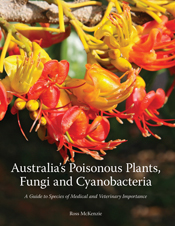Beak Trimming Handbook for Egg Producers
Best Practice for Minimising Cannibalism in Poultry
By: Phil Glatz, Michael BourkeBest-practice and current methods are examined, along with ways to reduce trimming, alternatives and future developments.
The Beak Trimming Handbook for Egg Producers is a straightforward, practical guide to beak trimming of egg-laying hens to minimise cannibalism. It provides comprehensive information on why birds peck and how pecking can lead to problems like cannibalism; the methods available to beak trim birds; why a particular method should be chosen; and at what age birds may be trimmed. + Full description
The book addresses quality control of beak trimming, enabling egg producers to be confident that equipment is properly set up, that birds are handled and trimmed according to best practice and farm biosecurity is maintained. Management of birds following beak trimming, to protect of the welfare of the birds and to ensure maximum productivity, is covered in detail.
Best-practice, current methods of beak trimming, costs of trimming and ways to reduce the use of trimming are examined, along with expected future developments. The advantages and disadvantages of beak trimming are fully explored, covering both public and industry attitudes to the operation. Alternatives to beak trimming are canvassed to understand how the use of fitted devices, enrichment devices, abrasives, low lighting and the choice of low-pecking strains of birds can reduce the need for beak trimming. Finally, the book discusses strategies for minimising cannibalism and how the chosen strategy may be documented and justified.
Please note that this book is spiral-bound.
- Short descriptionNews
No longer available in a print edition.
Reviews
"This handbook is well written for the target audience, with appropriate language and technical content."
Irene Gorman (Dander; Newsletter of the Australian Veterinary Poultry Alliance, Vol 29, Issue 2, 2006)
"This handbook will successfully guide farm managers into optimising the conditions for layers so that cannibalism is minimised and where this behaviour cannot be elimintaed, then beak trimming can be carried out with the higest regard for bird welfare."
Poultry International, September 2006
"Essential reading for everyone in the egg production and pullet rearing businesses."
Don Bell, Poultry Specialist, University of California (Journal of Applied Poultry Research, Winter 2006)
Details
ePDF | March 2006ISBN: 9780643093539
Publisher: Landlinks Press
Available from eRetailers
ePUB | March 2006
ISBN: 9780643098633
Publisher: Landlinks Press
Available from eRetailers
Features
- Easy to read, practical guide to beak trimming of egg laying hens to minimise cannibalism.
- Provides comprehensive information on why, how and when birds should be beak trimmed.
- Gives best practice for current techniques and technologies and expected future developments.
- Fully explores the advantages and disadvantages of beak trimming along with public and industry attitudes to the operation.
- Discusses alternatives to beak trimming for minimising cannibalism.
- Presents a strategic approach to minimising cannibalism in commercial layer flocks, while maintaining farm profitability and optimum bird welfare.
Contents
ForewordChapter 1. Pecking Problems
Chapter 2. Beak-Trimming Methods
Chapter 3. Best Practice Beak Trimming
Chapter 4. Managing Beak-Trimmed Birds
Chapter 5. Welfare of Beak-Trimmed Birds
Chapter 6. Industry Views on Beak Trimming
Chapter 7. Alternatives to Beak Trimming
Chapter 8. Strategies for Minimising Cannibalism
Appendix: Farm Managers' Targets for Beak Trimming
Glossary
Further Reading
Authors
Dr Phil Glatz has 30 years experience in poultry husbandry and production systems research. His recent research has examined the effect of perches, solid sides and abrasive in cages on production in laying hens and the role of integrated farming in free-range pig and poultry production both in Australia and in the South Pacific. His work with domestic poultry, emu and ostriches has resulted in the development of world’s best practice for beak trimming of poultry and declawing of ratites. He recently developed the world’s first program for accrediting beak trimmers.Mr Michael Bourke is the Program Manager for Intensive Agriculture at the Primary Industries and Natural Resources Division, TAFE NSW. He is an author of beak trim and vaccination training manuals. His specialist knowledge is the learning process, workplace training and the National Training Framework.








